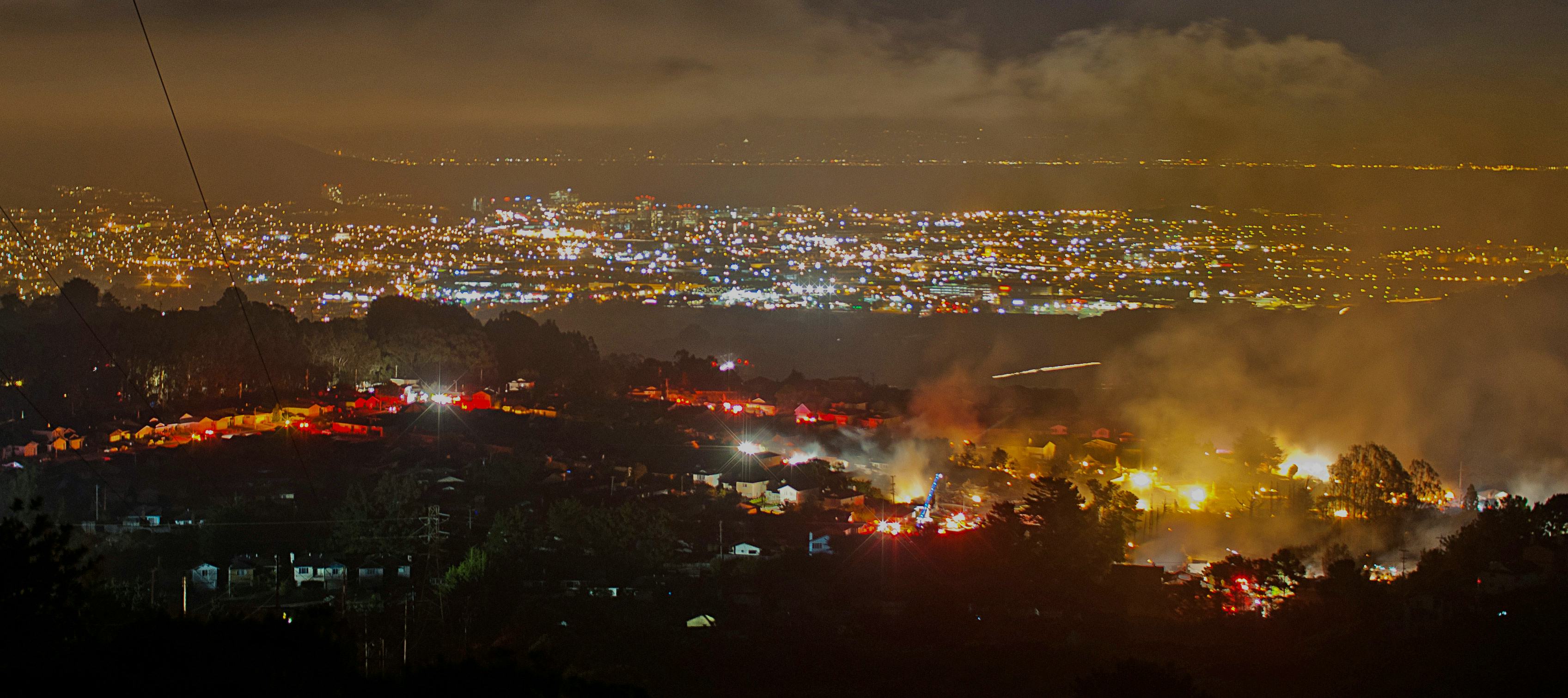

San Bruno Explosion
Imagine a pipeline as wide as an extra-large pizza carrying natural gas at high pressure across thousands of miles of the Bay Area. Now imagine it exploded in your neighborhood.
This is exactly what happened in San Bruno, a suburb south of San Francisco, on the afternoon of September 9, 2010. Residents had reported smelling gas for days before the explosion and its resulting fire, which killed 8 people, injured 58 more, and destroyed 38 homes.
The Investigation
In the aftermath, investigators found serious flaws in PG&E’s safety inspection processes and management culture. They found that the 28-foot section that failed was seriously compromised — its walls were of varying thickness, and welds ran down the entire length of the pipe. Some welds did not even penetrate all the way through the pipe's walls.
In April 2014, a Department of Justice grand jury charged PG&E with “violating the minimum safety standards” in multiple ways between 2003 and 2010. These charges included failing to keep accurate and complete safety records, failing to identify threats to the infrastructure, and failing to investigate serious threats when identified.
The indictment alleged that “PG&E knowingly and willfully failed to identify and evaluate threats to its transmission pipelines, including Line 132 underneath much of San Bruno” and, when faced with evidence, “knowingly and willfully chose not to assess and remediate the problems.” The case could have carried up to $1 billion in fines and damages, but PG&E eventually got away with a $30 million slap on the wrist.
Aftermath
One year later, the California Public Utilities Commission (CPUC), the state agency charged with regulating PG&E, fined PG&E a record $1.6 billion dollars.
Evidently PG&E did not learn its lesson. In December 2018, the California Public Utilities Commission (CPUC) announced it was considering further penalties for PG&E’s “systemic violations of rules to prevent damage to natural gas pipelines during excavation activities.” It turns out PG&E had not bothered to locate and mark pipelines — a failure which may have contributed to a pipeline explosion in San Francisco in February 2019.
The CPUC alleges that PG&E “pressured supervisors and locators to complete the work resulting in PG&E staff falsifying data so requests for pipeline locating and marking would not appear as late” and “had common knowledge among its supervisors that locators falsified data; and received input from external parties that there were discrepancies in its late locate and mark reporting” but did nothing.
The gas that flows under our streets and into our homes to heat our water and light our stoves and furnaces is inherently explosive and dangerous. PG&E's failure to inspect and maintain its pipelines is not merely negligent, it's criminal.